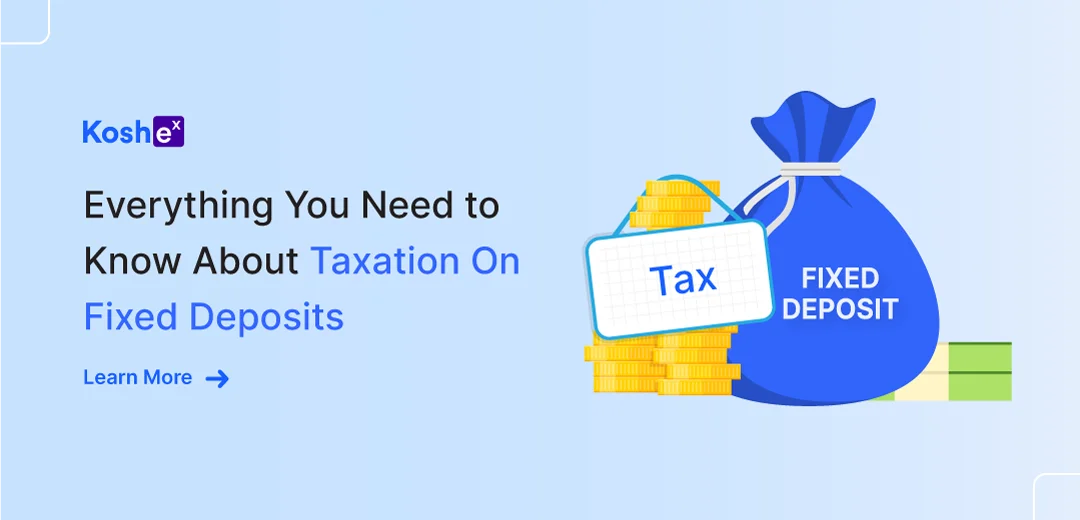There are several investment instruments available for investors in the market these days. Investors choose to invest in those instruments that suit their investment goals, risk tolerance, and investment horizon.
One such money market instrument is treasury bills, also known as T-Bills. In this blog, we will be diving deep into treasury bills, how it works, their benefits, taxation, and more.
What Are Treasury Bills (T-Bills)?
Treasury bills are money market instruments that are issued by the Government of India. These bills are Reserve Bank of India-issued promissory notes with a repayment guarantee.
They are categorized as short-term debt instruments. Indian residents can invest in T-bills at a discounted price and get the higher face value of the bill at the end of the maturity to make profits.
The important point to note here is that each treasury bill has a maturity period, which could be 14 days, 91 days, 182 days, or 364 days.
After the maturity period is over, the government rolls out the bills by offering investors the face value of the bill. Usually, T-bills have a minimum investment requirement of ₹25,000 in a T-bill, and in multiples of ₹25,000 thereafter.
How Do Treasury Bills Work?
Let’s understand the workings of treasury bills with an example. The government issues a treasury bill that has a face value of ₹120 and is available for purchase at a discounted price of ₹118.
After a maturity period of, say 91 days, is over, the government will purchase the T-bill at ₹120. This will help you make a profit of ₹2. It is important to note that the bills are available at discounted prices at zero interest rates.
What Are The Types Of Treasury Bills?
As mentioned above, treasury bills are determined by their maturity period. The maximum tenure of the treasury bills is below one year. Depending upon the maturity, there are mainly four types of treasury bills.
| Maturity Period | Auction Frequency | Minimum Investment |
| 14 days | Every Wednesday | ₹1 lakh |
| 91 days | Every Week | ₹25,000 |
| 182 days | Every Alternate Week | ₹25,000 |
| 364 days | Every Alternate Week | ₹25,000 |
The tenure does not change for the treasury bills. However, the discounts and treasury bill rates are subject to change over the years.
How To Calculate Yield Rate On Treasury Bills?
The percentage of yield generated from a treasury bill can be calculated via the below formula.
Y = (100-P)/P x 365/D x 100
Here, Y = return percent
P = discounted price at which a security is purchased
D = tenure of a bill
Let’s understand this better with an example. If the RBI issues a 91-day treasury bill at a discounted value of ₹97 while the face value of the bill is ₹100. The yield on such government securities can be determined as below.
Yield = (100 – 97) / 97 x 365/91 x 100
Yield = 12.40%
Why Does The Government Issue Treasury Bills?
The government issues treasury bills to raise short-term funds to finance its several expenditures (such as infrastructure) and to manage its cash flow. In this way, the government can borrow money from the public without resorting to more expensive forms of borrowing, like bank loans.
They also issue the T-bills to lower the total fiscal deficit in an economy, and also at regulating the total currency in circulation at any given point in time.
The RBI issues treasury bills on behalf of the government under its open market operations (OMO) strategy. This move is done by the Central Bank to regulate the nation’s inflation level and the spending/borrowing habits of individuals.
But how does this work? When the economy is growing, inflation will increase. At that time, high-value treasury bills are issued to the public, reducing aggregate money supply in the economy. This will effectively lower the surging demand rates, and in turn, high prices hurting the poorer sections of society.
Similarly, a contractionary OMO regime is undertaken by the RBI during times of recession and economic slowdown. How does that work? The government will roll out treasury bills at a reduced circulation rate and discounted rates.
This will divert investors’ resources to a desired sector, thereby boosting cash flows to the stock market. Such an increase in productivity has a positive impact on the Gross Domestic Product (GDP) and aggregate demand levels in an economy.
Hence, a treasury bill is an important monetary tool used by the Central Bank to regulate the total money supply in an economy, as well as, to raise short-term funds.
What Are The Advantages Of Treasury Bills (T-Bills)?
There are several benefits to investing in treasury bills. We have mentioned them below.
No Risk
Treasury bills are issued by the RBI and are backed by the central government. These tools act as a liability to the government as they need to be repaid within the stipulated date.
This means you will earn returns even when the market is underperforming. So, T-Bills come with zero risks and offer fixed returns.
Highly Liquid
The government treasury bills have a maximum maturity period of 364 days. You can also invest in bills for as low as 14 days. This makes them a good investment option for your short-term goals.
Also, in case of emergencies, you can sell such government securities in the secondary market, which will allow you to convert your holding into cash.
Bidding
Treasury bills are usually auctioned by RBI every week through non-competitive bidding. This allows retail and small-scale investors to take part in such bids without having to quote the yield rate or price.
It increases the exposure of amateur investors to the government securities market, thereby creating higher cash flows to the capital market.
What Are The Downsides Of Treasury Bills (T-Bills)?
Even though there are several benefits to investing in treasury bills, there are some downsides as well.
The biggest downside to investing in treasury bills would be the low returns. Although you make guaranteed returns, treasury bills do not generate significant returns when you compare them with the other securities in the market.
At times, these returns could be insufficient to beat inflation too.
The next downside with T-bills is that they come with a minimum investment requirement of 25,000 or ₹1 lakh. This might not be affordable for many investors.
The other downside with T-bills is that the returns you make on them are subject to taxes. This means your returns could further decrease because of the taxes.
What Is The Taxation On Treasury Bills?
The returns made on T-bill investments are subject to Short-Term Capital Gains Tax (STCG) and they are taxed as per the income tax slab of an investor.
Hence, your returns could attract up to 30% tax as per your tax slab rate. But the good news is you are not required to pay any tax deducted at source (TDS) upon redemption of these bonds.
In The End…
Treasury bills are an ideal investment option for investors, who are looking to park their surplus funds in a safe instrument. They are also suitable for investors with short-term goals.
Since you earn fixed returns from T-bills, you don’t have to worry about volatility or market performance. If you have a low-risk appetite, you can consider investing in T-bills.
We hope this article helped you understand treasury bills, how they work, their benefits and downsides, their taxation, and more.
If you wish to learn about other personal finance topics or investment instruments, you can check out our other blogs in our Blogs section or explore our Offerings section.
Also, you can create a free account with Koshex to track your net worth in real-time, save smartly, invest in personalized recommendations, build intelligent money habits, and more.
Check out Koshex today and take your financial game to the next level.









Leave a Comment